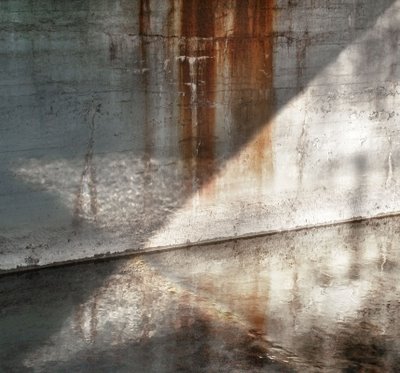
Ignoring the pros and cons of shooting with a square format camera, I'd like to address the aesthetics of the square print in a square matte and square frame.
There's something simple and elegant about a square image. Perhaps it's simply the novelty in a world of non square doors, windows, books, tv's and pictures.
Certainly the modern art painting world has embraced square images enthusiastically - it's just as common as rectangular images. That said, there is a reluctance by many photographers to print square.
Of course there is a whole line of thinking that says 'Thou Shalt Not Crop' and thus the photographer is at the mercy of his camera viewfinder. The whole business of cropping is a topic for another day. Besides, with stitching and higher resolution films and sensors it's less of an issue anyway.
Mathematically there are features to the square that relate to composition. With each side the same length, it offers a unique opportunity for composing four sides to the middle. The diagonal line between corners is half way at 45 degrees. That it isn't a horizontal rectangle actually takes away from the sense of a window onto the world and instead suggests that it is a created object - it clearly isn't a post card.
Square pictures allow for more foreground than a horizontal rectangle without entirely being about the foreground background relationship - look at the images of David Plowden, most of them taken with a 55 mm. lens on a film based square format Hasselblad.
There is a photographer whose name I cannot remember (and perhaps you know), who was published in one of the magazines. He shot long exposures in black and white of the edge of the sea, with an 8X10 camera blocked down irretrievably to 8X8. They were wonderful photographs.
Michael Kenna uses the square image. Howard Schatz often uses square format. Brett Weston allowed his format to be dictated by the camera he was using. His earlier images are 4X5, then he used a Rollei SL-66 squre format (see his Alaska images) and latterly was using a Mamiya RB67 so his hawaiian images are almost all 6X7 ratio. While we all want to use all of the negative possible, it does seem odd to me that a photographer with a particular format camera refuses to photograph anything which only composes well in something other than the ratio built into the camera.
Square format works very well for photographs of people in their environment - including just enough of the environment to interest without becoming the whole picture. Of course, some of this may have more to do with the waist level finder of square format cameras (waist level doesn't work unless you have square format or a rotating back).



5 comments:
"…it does seem odd to me that a photographer with a particular format camera refuses to photograph anything which only composes well in something other than the ratio built into the camera."
I don't think it's a question of refusal so much as an interest in playing the hand that's been dealt. In the case of a photographer working with various formats and printing those formats without cropping it may even be a matter of intent. Within each camera format and lens choice there's still an infinite number of pictures to be made. The format and lens are constraining for sure, but the constraints can be a good thing and for some of us are just part of the picture-making process.
Michael:
good point. there are two ways to look at it - its tough enough using the viewfinder to compose well without giving yourself an infinite variety to think about - you might not take the photograph till the next day - of course the other way to argue is it's hard enough to find really strong compositions and to limit yourself to only those that work within your viewfinder is to hobble yourself. There are an infinite number of compositions out there but at any given monent, there are few if any that really work. It's harder to recognize them if they come in any old shape, but there's more of them to find.
Are you referring to David Fokos?
Exactly correct. There are several photographers doing this long exposure, square image, edge of the sea work but I like his the best.
Thanks for this interesting post. I take square format photos using Lubitel and Diana cameras, and have often puzzled over why I find the format satisfying. Your explanation compliments my own vague fumbling towards the idea that the square makes the image into something beyond just a representation of a moment in reality.
Post a Comment